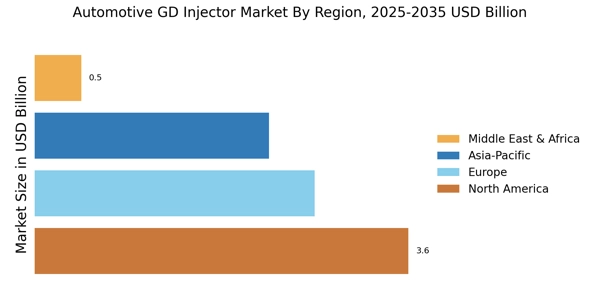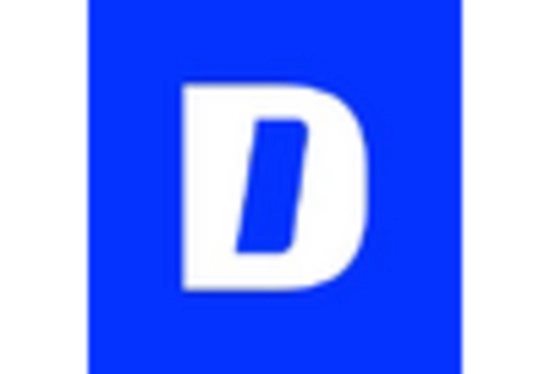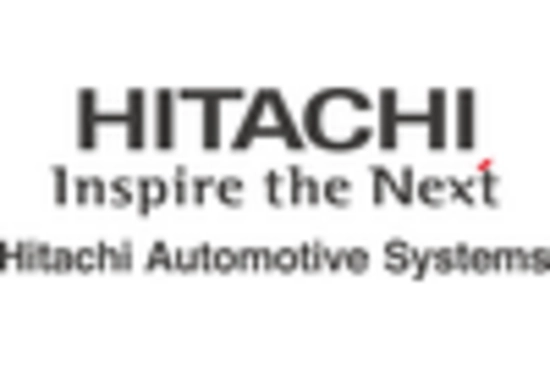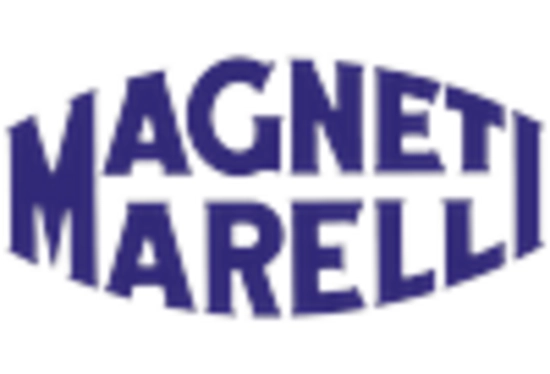The Automotive GD Injector Market is currently characterized by a dynamic competitive landscape, driven by technological advancements and increasing demand for fuel-efficient vehicles. Key players such as Bosch (Germany), Denso (Japan), and Valeo (France) are at the forefront, each adopting distinct strategies to enhance their market positioning. Bosch (Germany) focuses on innovation, particularly in the development of advanced fuel injection systems that improve engine performance and reduce emissions. Denso (Japan), on the other hand, emphasizes regional expansion, particularly in emerging markets, to capitalize on the growing automotive sector. Valeo (France) is actively pursuing digital transformation initiatives, integrating smart technologies into their products to meet the evolving needs of consumers. Collectively, these strategies contribute to a competitive environment that is increasingly centered around technological prowess and sustainability.
In terms of business tactics, companies are localizing manufacturing to reduce costs and enhance supply chain efficiency. The Automotive GD Injector Market appears moderately fragmented, with several key players exerting influence over various segments. This fragmentation allows for a diverse range of products and innovations, although it also intensifies competition among established and emerging firms. The collective influence of these key players shapes market dynamics, as they vie for leadership through strategic partnerships and technological advancements.
In August 2025, Bosch (Germany) announced the launch of a new line of high-pressure fuel injectors designed to optimize combustion efficiency in gasoline engines. This strategic move is significant as it aligns with the industry's shift towards more environmentally friendly technologies, potentially enhancing Bosch's competitive edge in the market. The introduction of these injectors is expected to meet the stringent emissions regulations being implemented globally, thereby positioning Bosch favorably in the eyes of both manufacturers and consumers.
In September 2025, Denso (Japan) revealed a partnership with a leading electric vehicle manufacturer to develop next-generation fuel injectors tailored for hybrid systems. This collaboration underscores Denso's commitment to innovation and its strategic focus on the hybrid vehicle segment, which is anticipated to grow substantially in the coming years. By aligning with a prominent player in the electric vehicle space, Denso is likely to enhance its market presence and leverage synergies that could lead to further advancements in fuel injection technology.
In October 2025, Valeo (France) launched a new initiative aimed at integrating artificial intelligence into its fuel injection systems. This initiative is indicative of the broader trend towards digitalization within the automotive sector. By incorporating AI, Valeo aims to enhance the precision and efficiency of its injectors, thereby improving overall vehicle performance. This strategic direction not only positions Valeo as a leader in technological innovation but also reflects the industry's increasing reliance on smart technologies to meet consumer demands.
As of October 2025, the competitive trends within the Automotive GD Injector Market are increasingly defined by digitalization, sustainability, and the integration of artificial intelligence. Strategic alliances are becoming more prevalent, as companies recognize the value of collaboration in driving innovation and enhancing product offerings. Looking ahead, it is likely that competitive differentiation will evolve, shifting from traditional price-based competition to a focus on innovation, technological advancements, and supply chain reliability. This transition may redefine market dynamics, compelling companies to invest in research and development to maintain their competitive edge.


















Leave a Comment